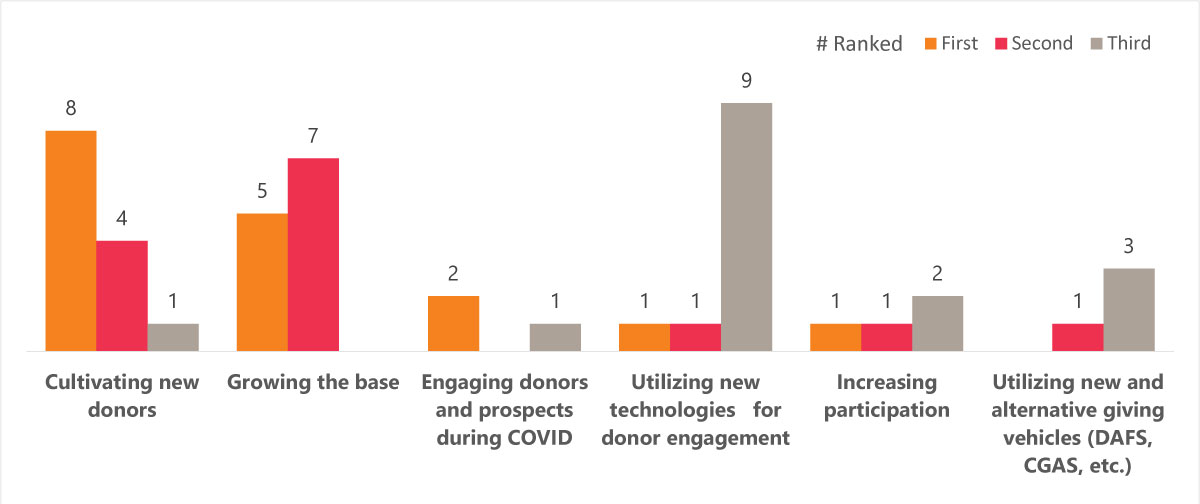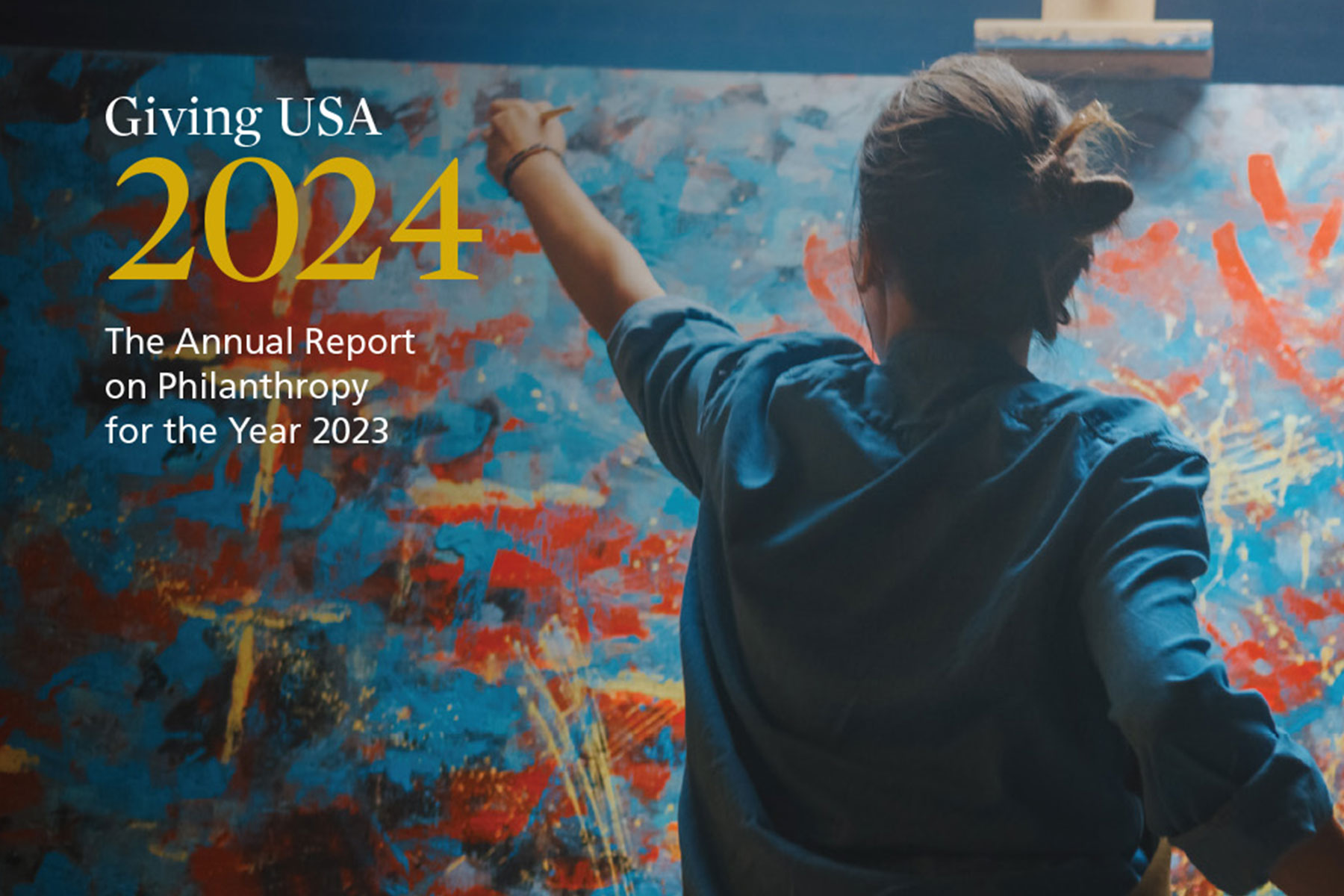Every organization has a story of a donor who consistently made low-level gifts for years, occasionally upgrading the amount or even skipping a year, only to commit to a significant major or planned gift after years of regular giving. In philanthropy, we know these gifts come as a result of deliberate cultivation and coordination. But one essential factor that every story needs to have is a base-level donor who is engaged and receptive to future cultivation.
Over the last five years, many nonprofit organizations have noticed a disturbing trend: While overall donation amounts continue to rise (albeit modestly since 2018, and not necessarily at pace with inflation), counts of donors, primarily base and mid-level donors, have been declining. This not only means there are fewer donors overall, which impacts fundraising totals, it means there are fewer donors who could potentially mature into your organization’s next transformational donor.
The “Giving USA 2020 report” also supports this—the percentage of taxpayers who itemized their donations in 2019 was 13.7 percent, which is a dramatic decrease from an estimated 31.1 percent who would have itemized prior to the change in tax law (p. 73, Giving USA 2020 Complete Report). Giving USA describes this phenomenon as “donors down, dollars up.”
This is consistent with feedback BWF received in a recent survey of NGO leaders who indicated that donor acquisition and retention are among their key concerns (see survey responses below). It is also consistent with data analyses BWF has conducted with client organizations, which shows consistent decline in base-level giving rates since 2015-2016.
Q: What is top of mind when relating to prospects & donors?

There is a myriad of reasons for this decline; three are outlined here.
Causes
Donor Fatigue
A common refrain among many of our clients is concern about growing the donor pipeline—this has been a primary topic for well over half of our campaign readiness projects in the last year. While organizations recognize that their best next donors are their current donors, they also realize that they are in danger of “tapping out” these donors by approaching them again and again for a gift.
Today’s donors are savvier than ever about making philanthropic choices. In September 2020, Fidelity Charitable eliminated the entry point to open a donor advised fund (it was previously set at $5,000), so donors at all giving levels can approach giving much the same way as they might an investment portfolio. With so many charities vying for the attention of the same donor base, it is important to guard against donor fatigue.
Change in Personal Circumstances
The global pandemic in 2020 yielded an uneven financial crisis: Individuals with investments and complex assets saw astronomical growth after a short period of decline, while individuals who rely on monthly income have struggled to get by. Base-level gifts are often made from income rather than assets. Organizations with monthly donors or tithers experienced decline as these donors had to make the choice between supporting their beloved charities and places of worship and paying their bills—as many as 65 percent of churches revealed a decrease in tithing in April 2020. As the economy has recovered in 2021 and as job growth continues to rebound, we expect to see some return of monthly donors, but only time will tell if this return is consistent with pre-pandemic giving levels.
Uneven Donor Stewardship
A 2018 mid-level donor study found that some nonprofits may be unintentionally contributing to donor shrink based on inconsistent stewardship practices. In this study, the authors made mid-level gifts to 37 organizations and observed the follow-up treatment provided by these organizations declined dramatically just two months following their gift.
The fundraising world has changed—platforms like Kickstarter offer perks such as producer credit on fan-supported movies or early access to the beta version of a product in development. Base and mid-level donor expectations have adjusted accordingly.
Solutions
So, what can you do to combat these obstacles and grow and maintain a healthy base of supporters for your organization? BWF has three suggestions for organizations of all sizes and types to invigorate and grow your donor base.
Expand Opportunities to Become a Donor
The Women’s Philanthropy Institute out of IUPUI published their “Women Give” report in 2019 with a key finding related to how donors from different communities and backgrounds perceive their charitable activities:
“The research literature indicates that all groups of people are generous. Some early studies found that non-White communities might be less charitable than their White counterparts. However, these racial or ethnic differences do not appear in more recent studies that take into account other factors (like education, wealth, and income) that affect giving. While studies have not found that a person’s race influences his or her philanthropic engagement, people of color do often take their experiences as a minority into account when choosing how to engage philanthropically—such as which organizations or causes are most worthy of their time and money.”
Your organization has a number of engaged and enthusiastic volunteers or online ambassadors, many of whom will become donors over time with appropriate recognition and cultivation. As a starting point, talk with your stewardship team about offering in-kind recognition in your annual report for volunteering or promoting the work of your organization on social media. By inviting these audiences to become “insiders” within your organization, they will feel more engaged and involved and thus more likely to match their enthusiasm with financial donations over time.
Meet Donors Where They Are
BWF’s research reveals that social media is a great equalizer in terms of donor outreach. Donors of all ages, income levels, educational attainment, and geographic regions are engaging online with organizations they care about. While the pandemic has highlighted some significant gaps that remain in the digital divide, it has also made online interactions more accessible to more and more donors. Even better, more donors are comfortable engaging with organizations they support via social media in the form of attending virtual events, commenting on social media posts, and sharing accomplishments of their favorite nonprofits with their online networks.
Your organization should have a clear digital outreach and engagement plan for constituents that includes goals related to donor acquisition and warmth or inclination based on online interactions. Be sure to integrate any efforts that your marketing team (within or external to development) is undertaking already and consider ways in which you can use this information to advance relationships. For example, can you pull a report quarterly that shows which of your base-level donors have increased their digital engagement score by at least 30 percent and send targeted email appeals to encourage gift renewal or upgrades? Your organization will realize a great deal of efficiency by developing and executing strategies based on segmentation protocols or donor persona mapping.
Establish Consistent Stewardship Practices
Your organization needs strong stewardship practices that incentivize new and returning donors to continue to engage with your organization. Consider the following strategies that are strongly correlated to retention of base and mid-level donors:
- Send a first-time donor welcome packet: New donors, regardless of level, should receive an extra level of donor treatment to welcome them to your organization and encourage them to stay involved. This could be in the form of an additional welcome letter with a message from organizational leadership (or a key volunteer/brand ambassador), a very small physical gift or virtual badge, or a link to a donor-specific microsite that provides additional resources and information about your organization. The objective is to create a feel-good moment and sense of community immediately once someone engages as a donor.
- Create a subscription model with incentives or bonuses outside of one-time giving: Consider kickstarters or crowdfunding campaigns—donors to these know exactly what they will receive as a result of their gift. To encourage return giving and build community, consider something similar. Can you create a loyal giving reward? Ideas include: tagging a 5+ time donor (with consent) on social media channels, reaching out to donors who have given 4+ years and inviting them to be highlighted in an upcoming newsletter, or sending out end-of-year notices to all donors that summarizes their current giving and informs them of the next giving level (cumulative or consecutive giving milestones) that they are close to achieving.
- Pair new donors with engaged volunteers and donors: Many organizations struggle with how to engage their donor constituency so they feel more involved and cohesive, outside of their direct connection with organizational staff. In fact, BWF’s research shows that donors with connections to other donors are more likely to be significant supporters than those with fewer linked connections. Explore creative options to pair your new donors with those who have supported your organization for a long time. This could create informal mentorship opportunities for younger donors and, if executed well, will result in donors feeling more engaged with your organization for a longer period of time.
Conclusion
Today’s donors are savvier than ever, which can make long-term donor retention feel challenging. By redefining your base, broadening your outreach strategies, and enacting creative and comprehensive stewardship processes, your organization will be well situated to expand and retain donors at all levels.




